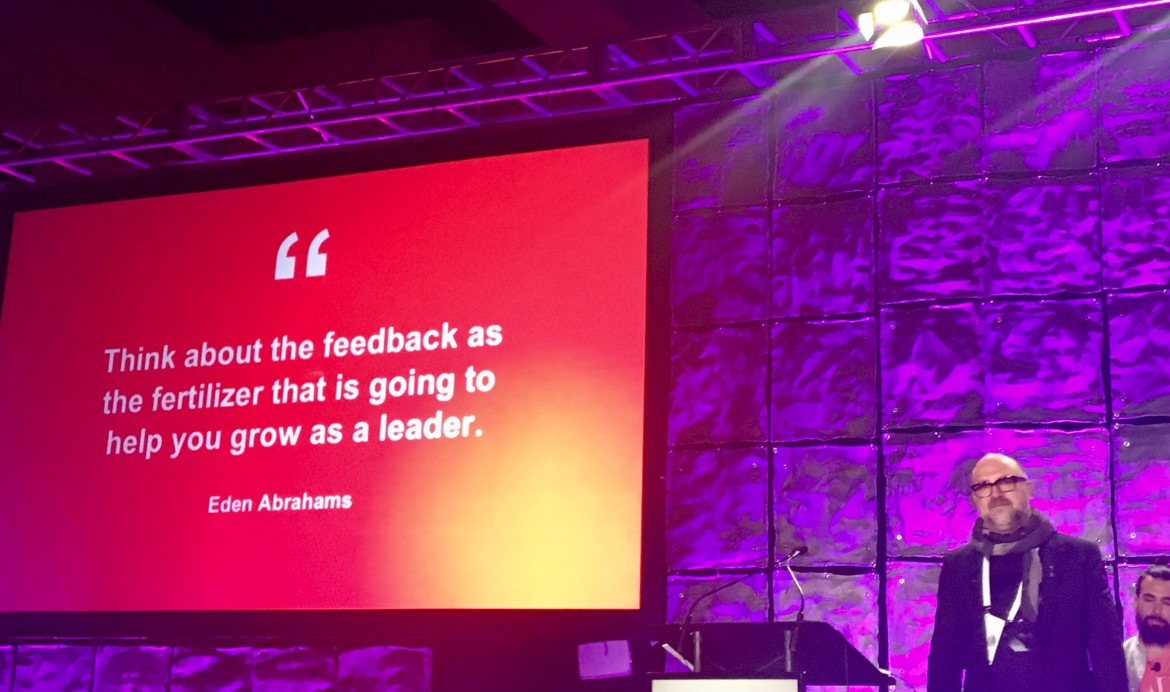
“Why waste time proving over and over how great you are, when you could be getting better?”
– Carol Dweck, Mindset: The New Psychology of Success
If you agree that self-improvement is the more worthwhile pursuit, then the next logical step is to figure out what, precisely, you need to get better at. A little bit of introspection to help you identify your own growth goals is a good starting point, but for the best and most accurate insights, it’s essential to get feedback from the people around you. If you’ve ever had a qualitative 360-degree feedback assessment conducted on your behalf, you know how powerful the resulting data can be. As a coach, I’m convinced there’s no better tool to help clients truly own their strengths and pinpoint behaviors and skill gaps that are getting in their way – even though the development opportunity themes can be a bitter pill to swallow.
One CEO I know told me that even now, more than 10 years later, reading the 360 feedback evaluation he received as a rising executive stands out as one of the most painful experiences of his professional life. And, he was quick to add, one of the most valuable. “I probably wouldn’t have made it this far,” he said, “if I hadn’t been forced to confront myself in that mirror and then figure out how to address some really problematic blind spots.”
Quantitative online 360 assessments are a more cost-effective way to elicit multi-rater feedback and can also offer a comprehensive picture of how others view you, especially if there’s an opportunity for raters to offer comments. Perhaps you work in an organization or have participated in a leadership development program that uses them. Or maybe you’re at a company that’s jumped on the radical candor bandwagon and part of your job as a manager is to give (and get) feedback all day long. Great! You’re set.
But what if you find yourself in a feedback desert, as many of my clients do? Maybe you get a pro forma performance evaluation every six months that is vague and generic and doesn’t contain anything in the way of actionable feedback. Or maybe you’re at the top of the org chart in a company where feedback tends to flow in only one direction – down. If either of these scenarios is the case, consider taking a 360 selfie.
Here’s how.
- Identify a cross-section of people (5-8 is a good range) who see you in action on a regular basis or with whom you’ve worked in the recent past and suspect are likely to have a range of perceptions about you (i.e., they shouldn’t all be members of your fan club). You might also want to consider adding one or two people you have close personal relationships with to the list – your partner, for example, or your oldest friend, or your twin sister. You’re likely to find that their feedback is highly consistent with the core themes that your colleagues identify.
- Tell them – either in person or via email – that you’re looking for some candid feedback to support your professional development and that you’d value their opinion.
- Ask whether they’d be willing to answer a few questions that will give you a more accurate perspective on how others experience you. Note: This is an important step – don’t skip it and just assume the answer is yes.
- Once they’ve agreed, ask them the following three questions (again, you can do this verbally or via email):
- What should I stop doing?
- What should I keep doing?
- What should I start doing?
If you suspect that some of your raters may be reluctant to be as candid as you’d like, you could consider offering all participants anonymity by sharing the questions with them via an online google or SurveyMonkey questionnaire.
- Once you’ve had a chance to absorb the feedback you receive – some of which may, at first, feel surprising, upsetting or unfair – ask yourself what useful takeaways you can glean from the more challenging themes (or what I like to call the fertilizer) that could be important growth catalysts for you.
- Create a written action plan to identify three changes you’re committed to making based on the feedback you received. Be sure to include specific steps you’ll take to achieve these objectives, as well as the positive outcomes you hope will result.
- Circle back to everyone who participated in your 360 selfie and thank them for taking part in the process. Then, depending on the nature of your relationship with each person, share all or part of your action plan and ask for their support in helping you achieve your goals by giving you real-time feedback on how you’re doing. This is a powerful way to get key colleagues invested in your change agenda, to reset strained relationships, and to help ensure that you’ll be successful. Change, after all, is hard, and none of us can do it alone.









